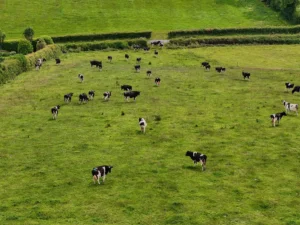
Cattle, greenhouse gases and the case for better methane metrics
Why the global warming potential of methane emissions from cattle production needs a closer look
While cows have fed, fueled and driven human progress for more than 10,000 years, rarely do we stop to think about the relationship between cows and life as we know it today.
From the ingredients in many life-saving medications to the leather seats in our cars and the food on our plates, cows have played a surprisingly vital role in shaping life on our planet for longer than you might think.
Enter the auroch: the ancient ancestor of the modern cow, domesticated between 10,500 and 10,000 years ago. This prehistoric predecessor of the cow was about the height of a large SUV or pickup truck. And at a massive 3,300 pounds (about 1,500 kilograms), aurochs weighed about as much as a midsize car, which is more than twice the size of the average cow today.
Aurochs roamed Europe, Asia and North Africa for some 2 million years before dying out in 1627 due to habitat loss and overhunting. Famously depicted in one of the oldest surviving records of human artistic expression, the Lascaux Cave paintings in France, the ancient aurochs represented both a challenge and a vital source of sustenance for early humans — a paradox that, in some ways, continues to follow cows today.
In a hunter-gatherer society, paleolithic humans needed aurochs to survive but also feared them for their formidable nature, marking the beginning of our complicated relationship with cows. Interestingly, this dichotomy of dependence and caution is just as present today.
Sure, we may not fear cows like our ancestors did aurochs. Yet in the face of climate change, biodiversity loss, deforestation and world hunger, there’s a lot to be considered when it comes to cows and our relationship with them.
The ongoing debate over the impact of cows on greenhouse gas emissions is nothing new.
“I think we could go and do a survey and many people would say, yes, cows are the worst thing in the world for climate,” said John Lynch, climatologist at Oxford University.
Cows are often blamed for climate change — but what if there’s more to the story?
That’s what Michelle Michael and Brandon Whitworth set out to find out in 2021, when the two journalists who now work in agriculture began investigating the true impact of cows on our planet — not just environmentally, but also nutritionally, economically and culturally.
They spent three years interviewing a diverse range of scientists, academics, farmers and other experts from around the world to learn more about the complex role of cows — and to discover the possible repercussions of a world without them.
The filmmakers share what they learned in a new documentary, World Without Cows.
Michelle and Brandon discovered that cows contribute 5–7% of total greenhouse gas emissions (according to the U.N. Intergovernmental Panel on Climate Change), but they also learned that the relationship between cows and our world is much more complex than many might realize.
For example:
While methane from cows plays a role in climate change, it is important to look at the bigger picture and consider the many ways cows contribute to our ecosystem.
Cows play a vital role in nourishing people and the planet. They provide essential nutrients that are not easily obtained from other sources, convert inedible waste into nutrient-rich food we need, enhance soil health, capture carbon from the air and store it in the soil, and foster biodiversity on grazing lands.
Grazing cows play a key role in enhancing soil health and capturing carbon. Grazing lands have the potential to store carbon in their soils, and integrating crops with livestock grazing can increase carbon absorption through plants’ roots. At places like Archbold’s Buck Island Ranch in Florida, researchers have shown that grazing cows can help the land capture more carbon than the cows emit. This ability of soil to store carbon is one important part of cows’ overall environmental footprint, and many experts agree it holds tremendous potential.
“The narrative people have heard is that cows are bad for the environment,” said Dr. Betsey Boughton, director of agroecology at Archbold, an independent, nonprofit organization dedicated to ecological research, conservation and education. “Grazing animals can actually change the function of grasslands. Cows are eating the grass and not allowing as much decomposition to happen on the ground. Without cows, we actually see more carbon emitted.”
“We’re trying to let people know that it is not just this black-and-white answer,” she added. “It is complicated, and we need to think about the whole story.”
So, what is the whole story? In short, the conversation about cows and climate is layered and complex. The prevailing narrative is narrow, but research tells us there’s more to explore.
Cows are integral to nourishing the world’s growing population, sustaining the livelihoods of people and global communities, and protecting the health of the environment.
As cows have become more ubiquitous with life on our planet, so has their carbon footprint — creating a fundamental disconnect between what we need to feed the world and the consequences that come with it.
The good news: Dairy farmers, beef ranchers and agricultural communities worldwide are taking steps to meet global demand for animal proteins and to produce food more efficiently, while also working to combat climate change.
From anaerobic digesters that help farmers turn cow manure into renewable energy to technologies that capture the methane that cows belch, innovations in agricultural sustainability are helping farmers nourish the world and preserve the planet.
Changes to cattle diets can also be effective. For example, boosting the levels of fat and grains in a cow’s diet has been shown to reduce methane emissions, and the use of natural feed additives — yeasts, tannins, seaweed, fats and oils — can help inhibit methane production.
Though the conversation about cows has become increasingly polarized, by embracing the complexities of agriculture, sustainability and food security — and keeping the door open to honest conversations — together, we can catalyze change.
The challenges our food system faces demand urgent and cohesive action that cannot be achieved overnight. Farmers, consumers, policymakers and communities must work together to continue creating and implementing solutions that balance the needs of both people and the environment.
Given how much there is to consider when it comes to cows and the health of people and our planet, we must broaden the conversation about their role in sustaining the earth. It all starts with a simple question: “Would we we better off in a world without cows?”
From the food we eat to the clothes we wear, cows play a crucial role in our daily lives. But what would happen if we suddenly removed them from the equation?

Why the global warming potential of methane emissions from cattle production needs a closer look
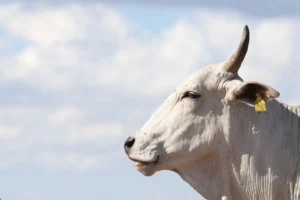
At COP30, the world’s eyes are on Brazil, and the cattle ranchers leading a global transformation.
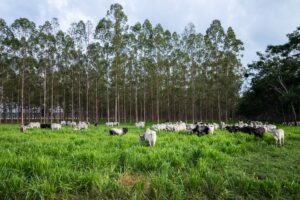
Restoring 40 million hectares of pasture could feed billions and ease pressure on the Amazon. Is the world paying attention?
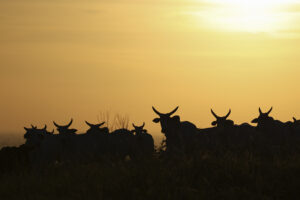
New mini-doc explores deforestation, food security and the Brazilian cattle sector’s path to a more sustainable future

Mention Brazilian beef, and you’re likely to spark discussion about familiar themes: deforestation, emissions and blame. What do we find when we dig deeper? Here are the answers to five top questions about Brazil’s role in protecting the Amazon and feeding the world.
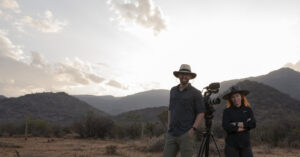
From science to the big screen: Discover how a single question grew into a global journey.
As climate change intensifies and the world’s population continues to grow, the pressure on our global food production system mounts. You can play an active role in shaping a more sustainable planet for future generations. Fill out the form below to learn more about how you can partner with us.
Receive notifications about the release date, new online content and how you can get involved